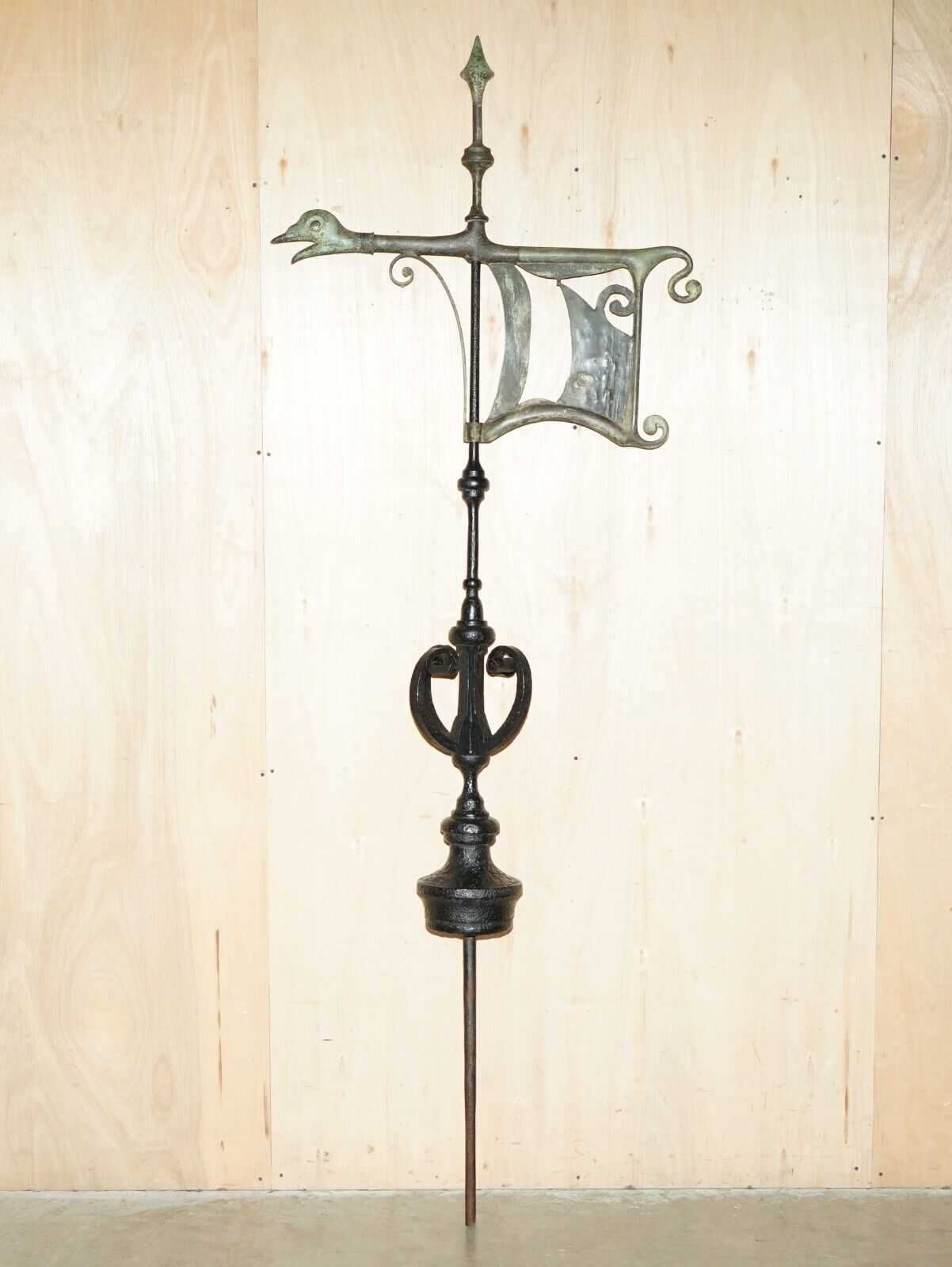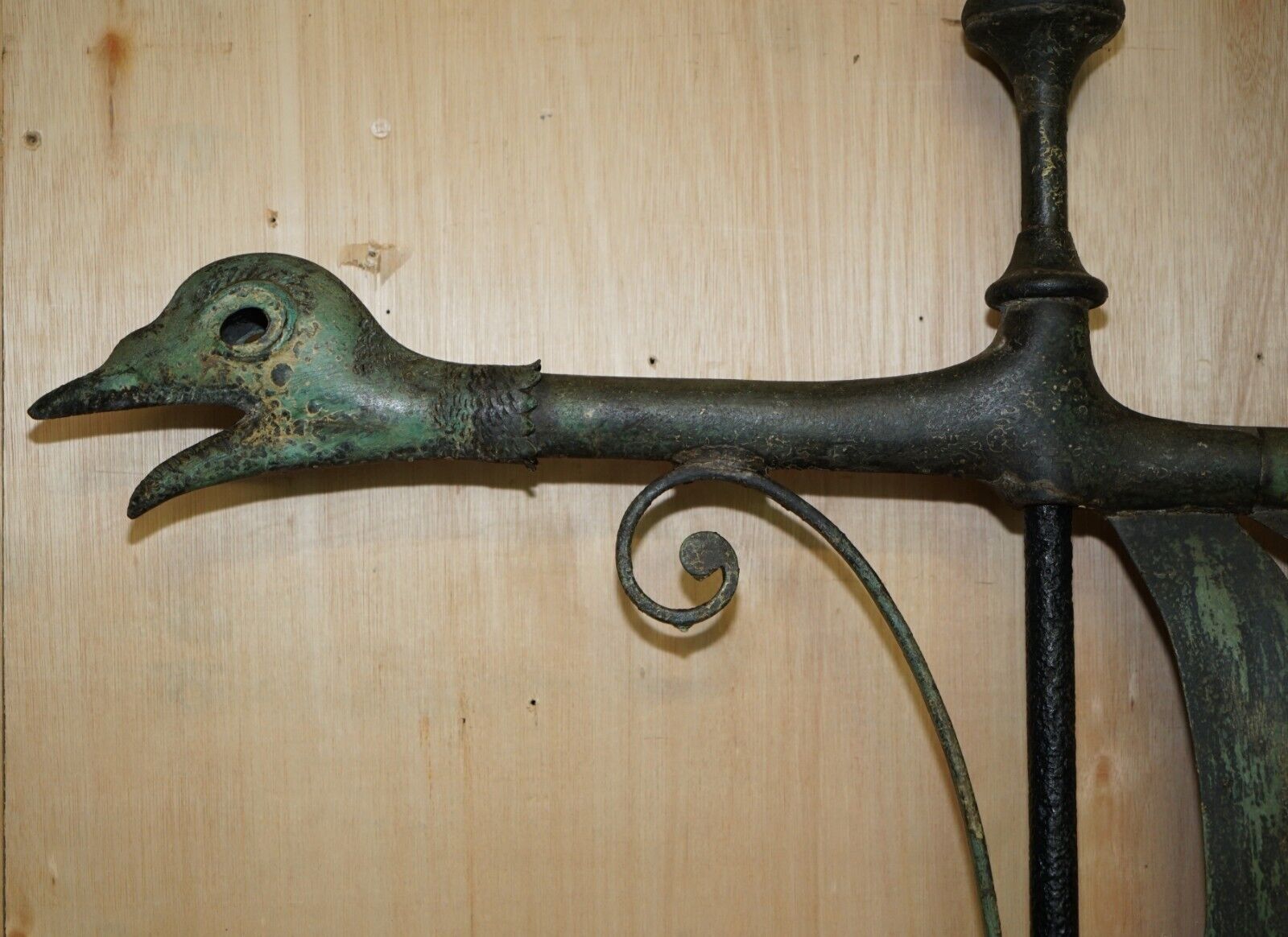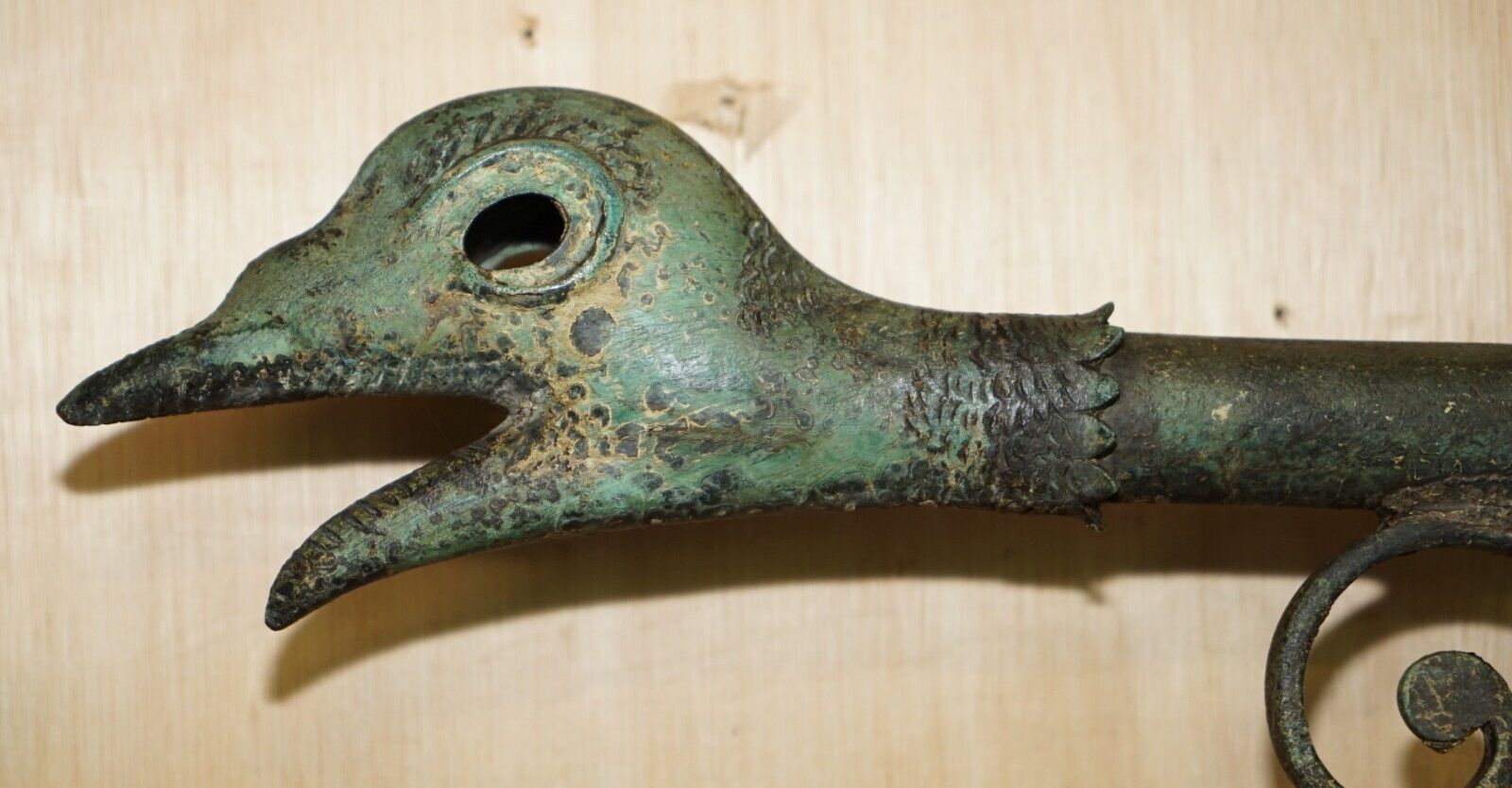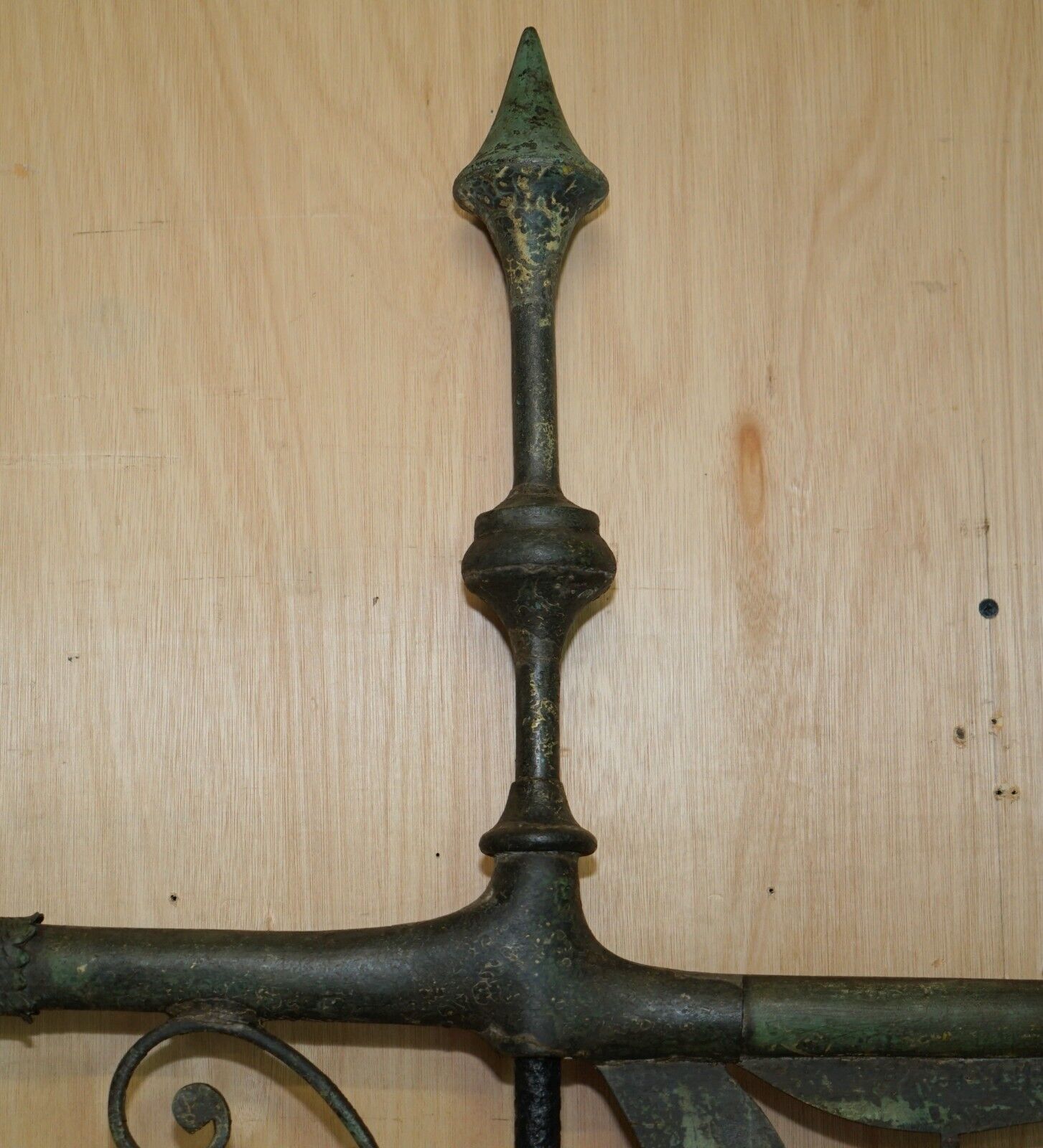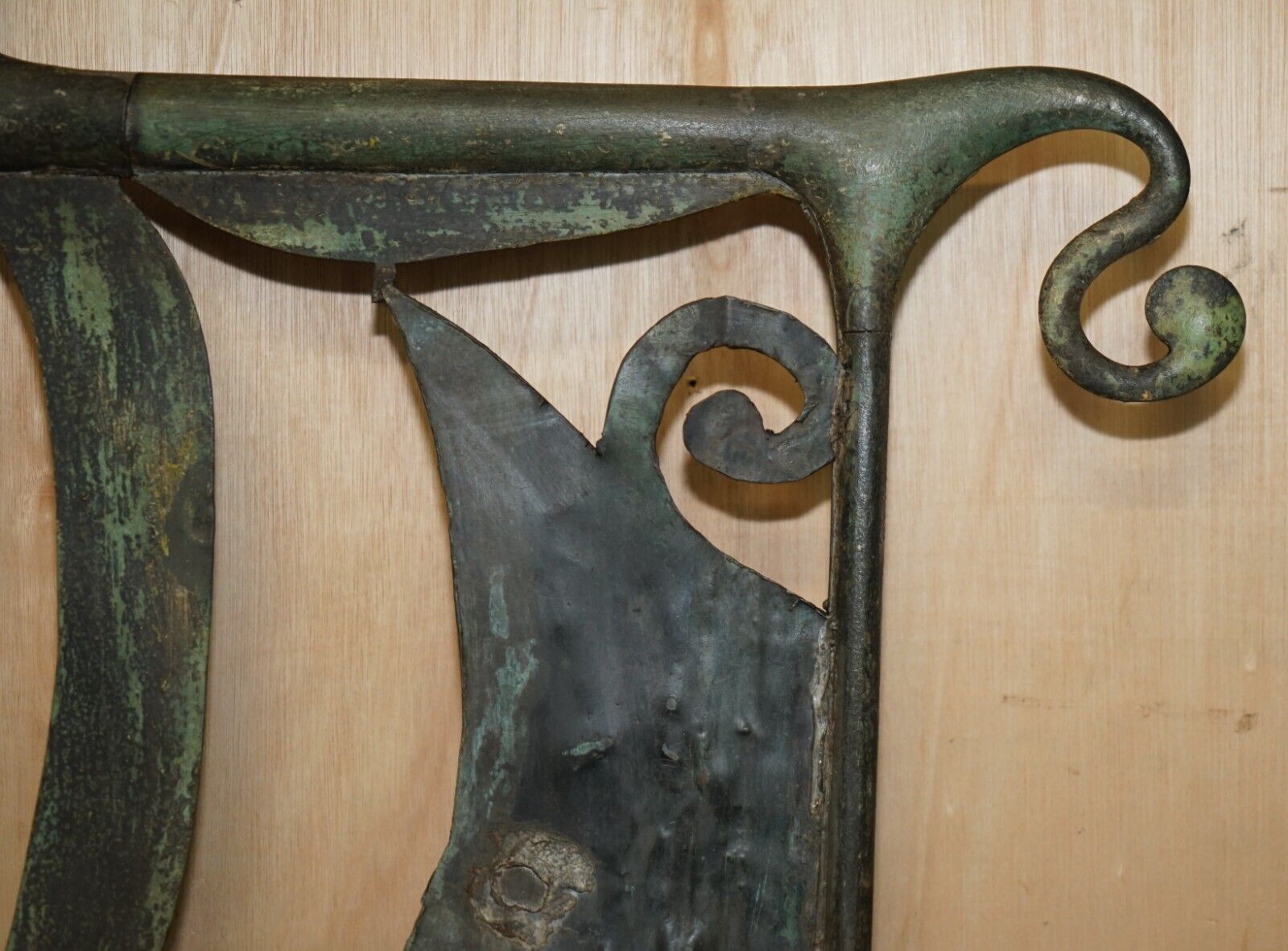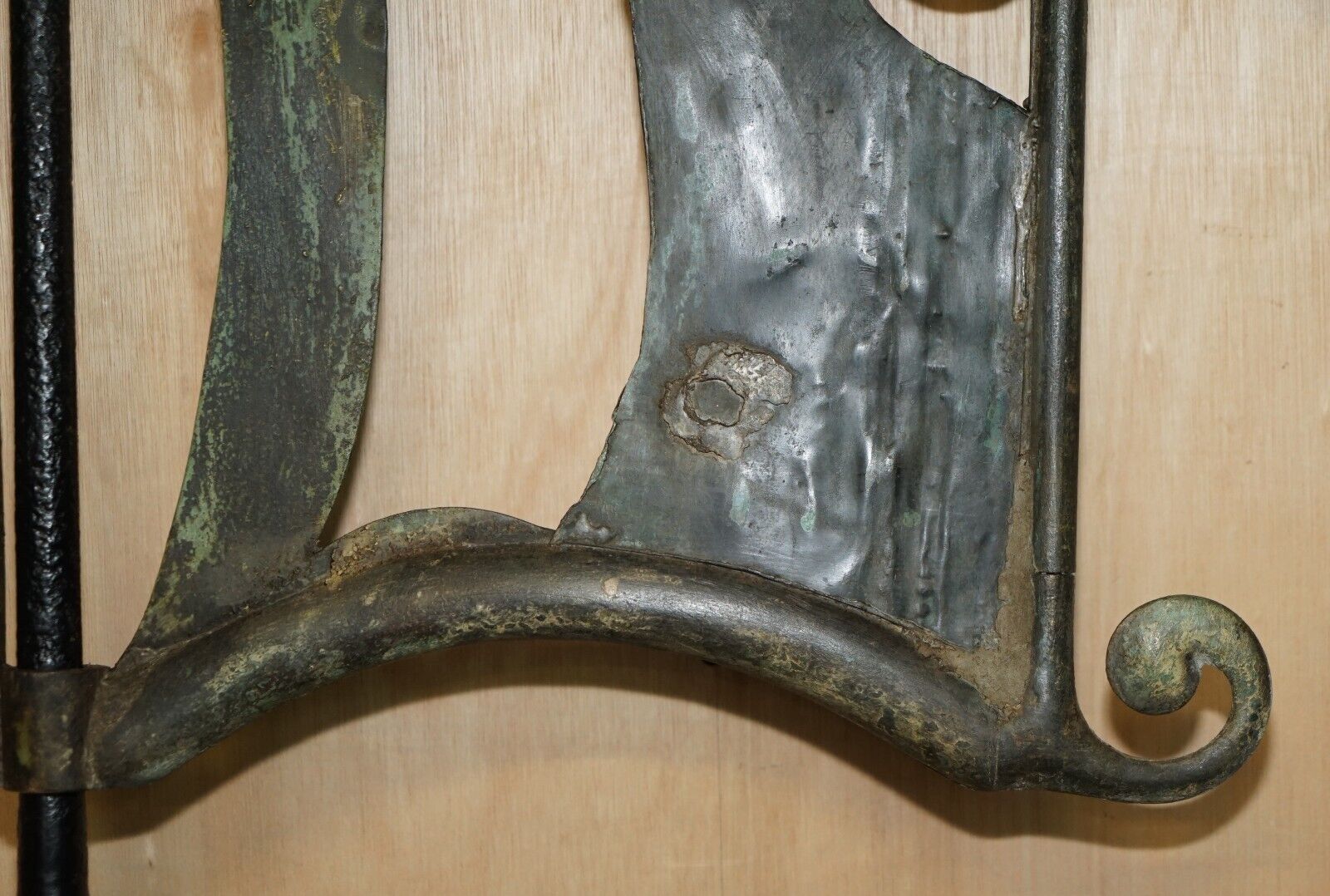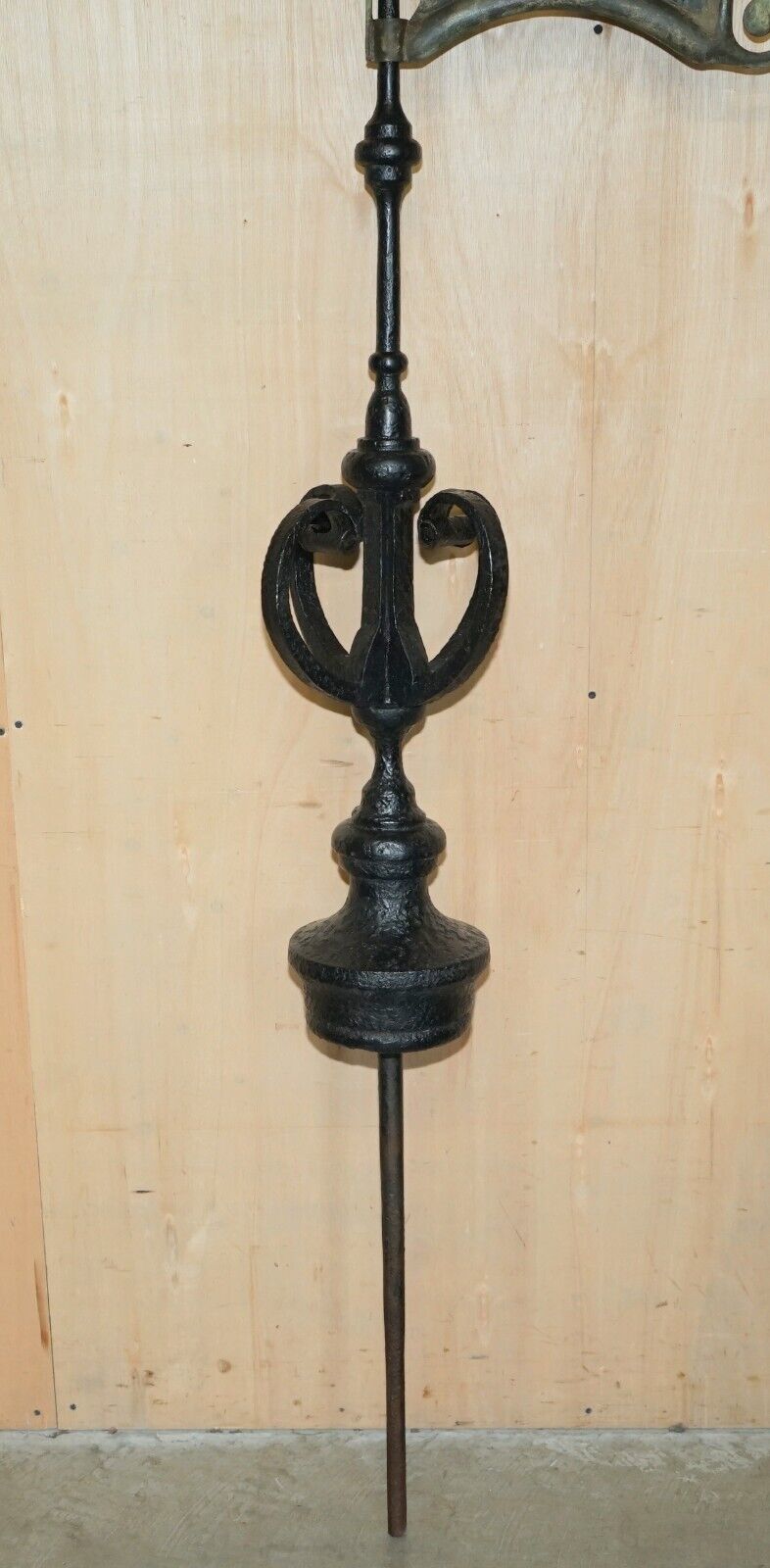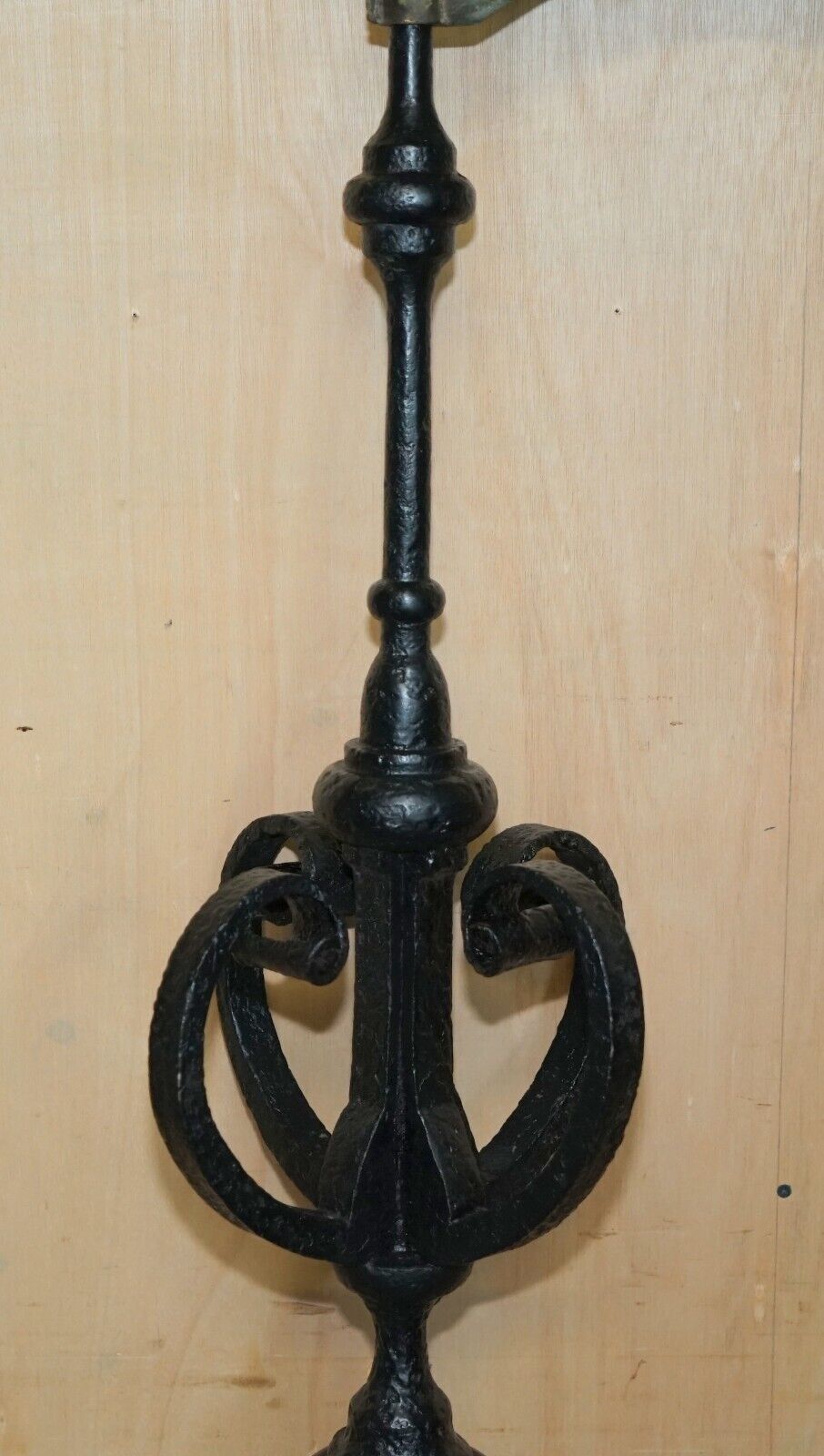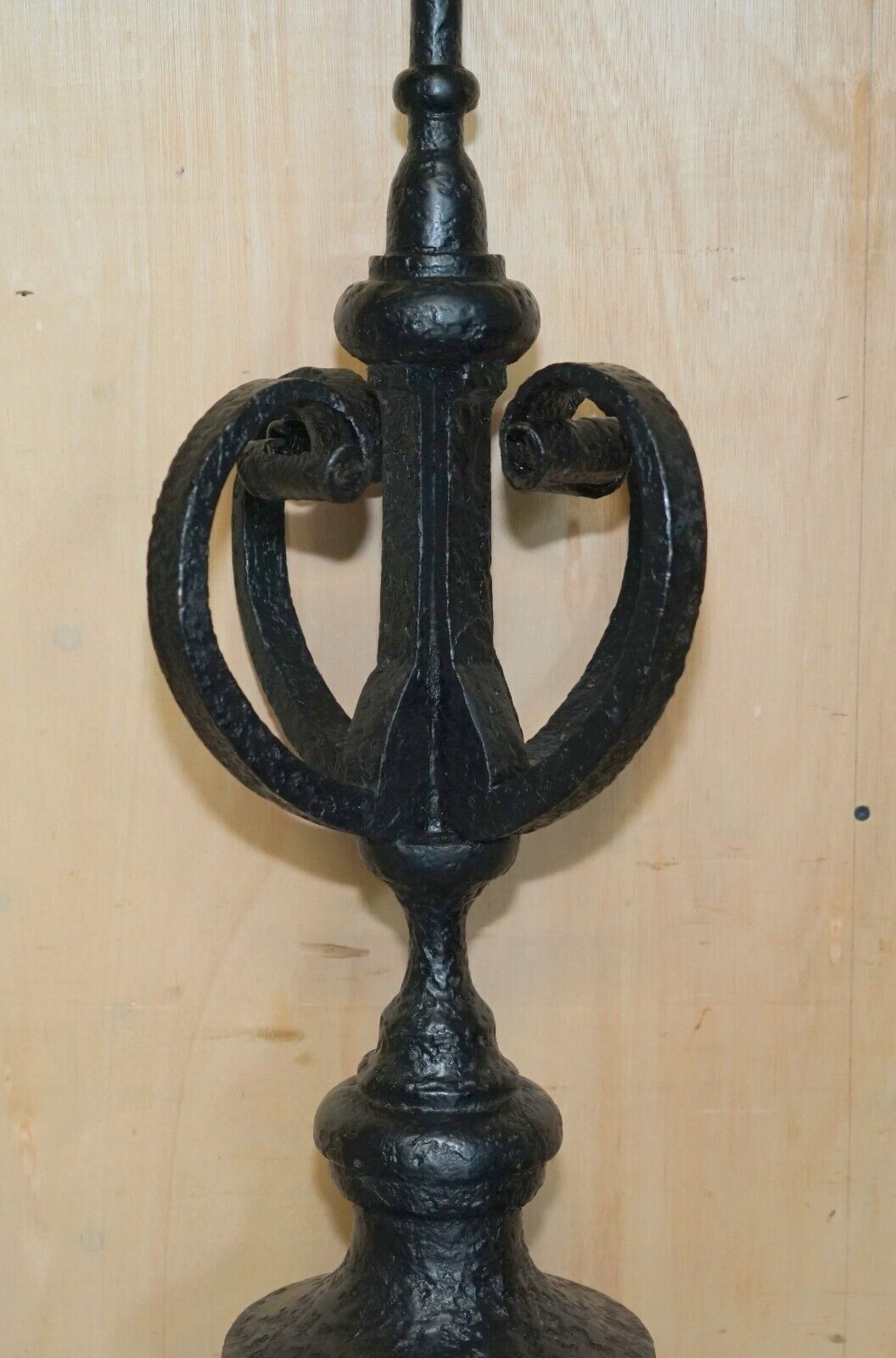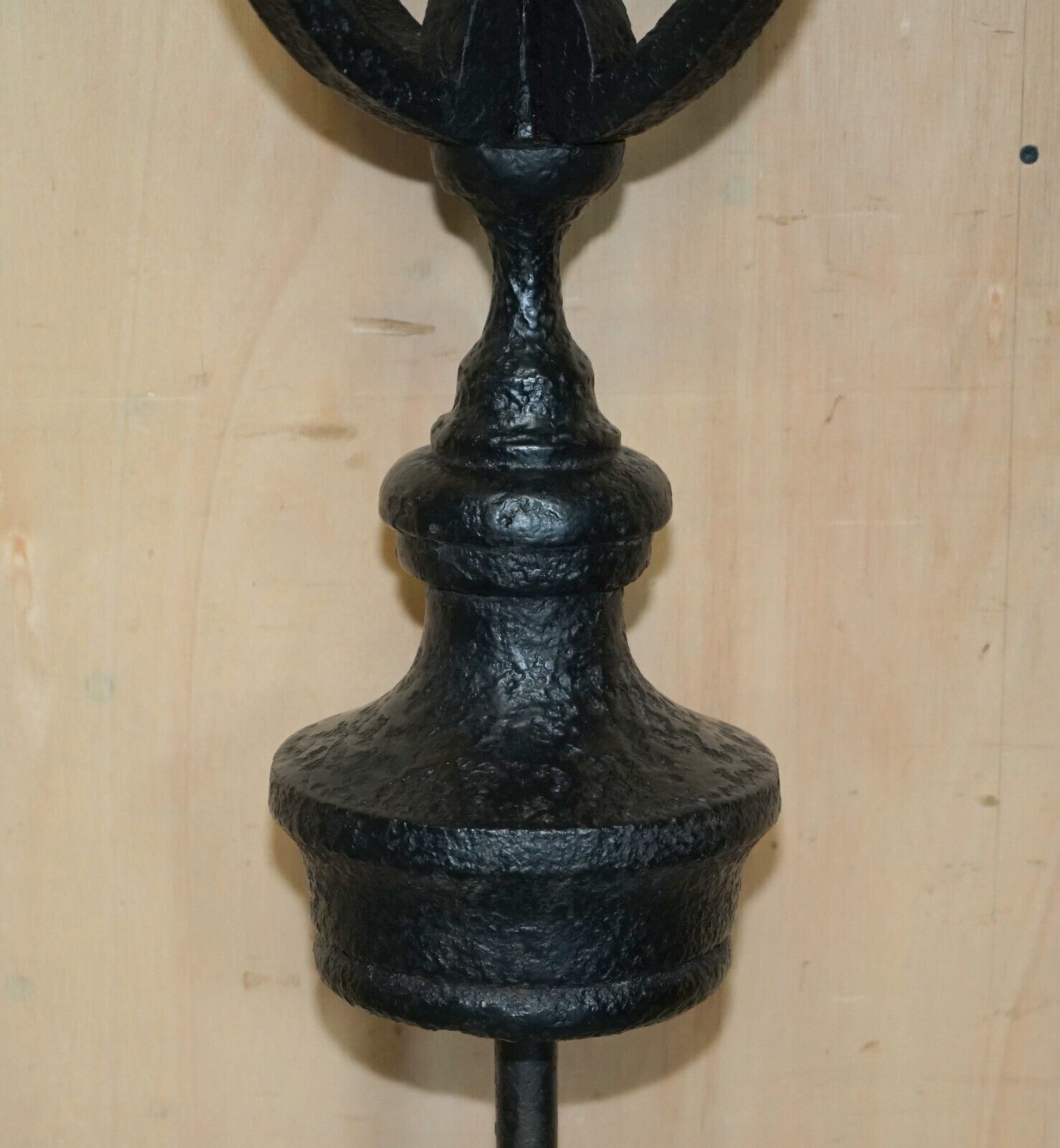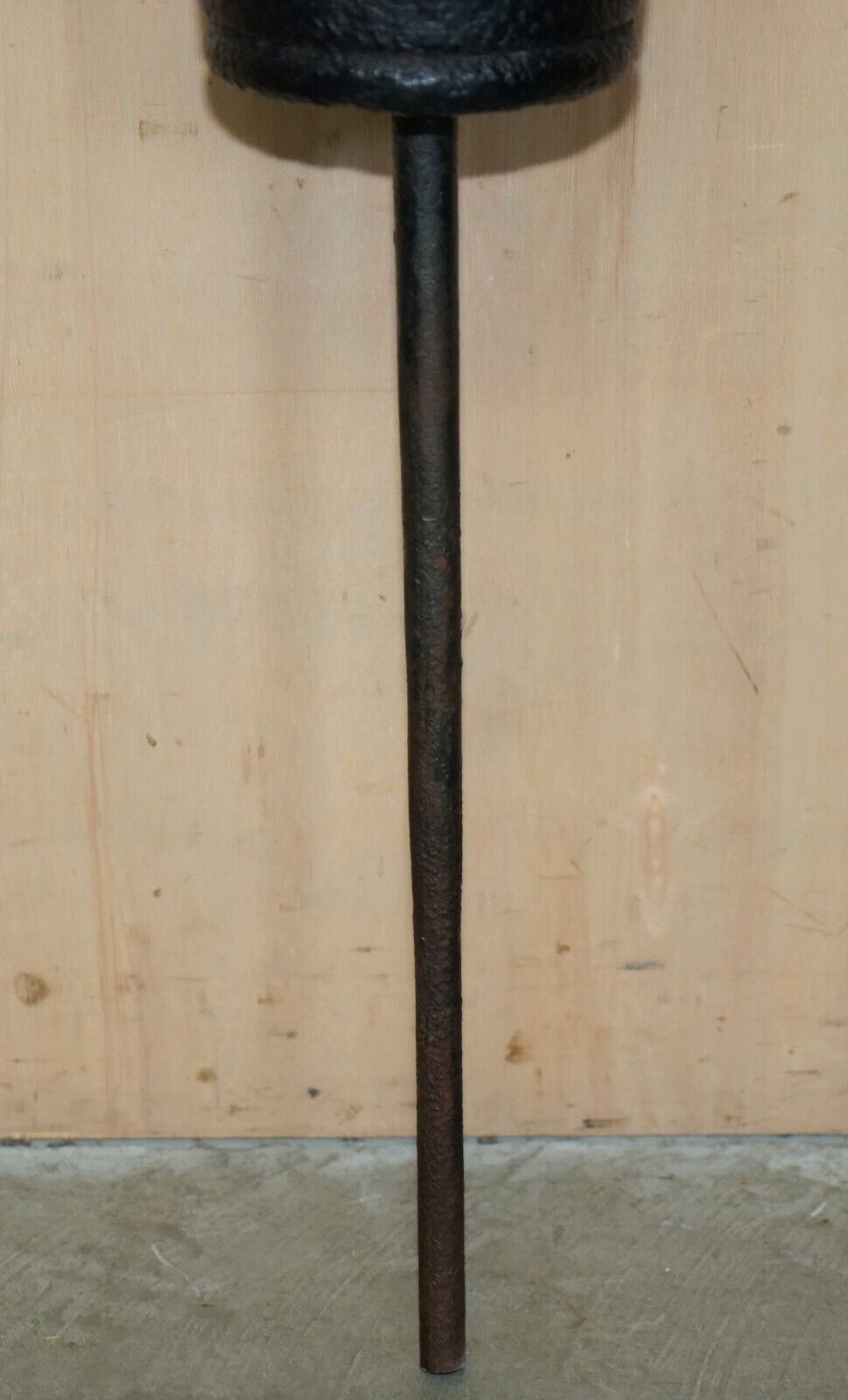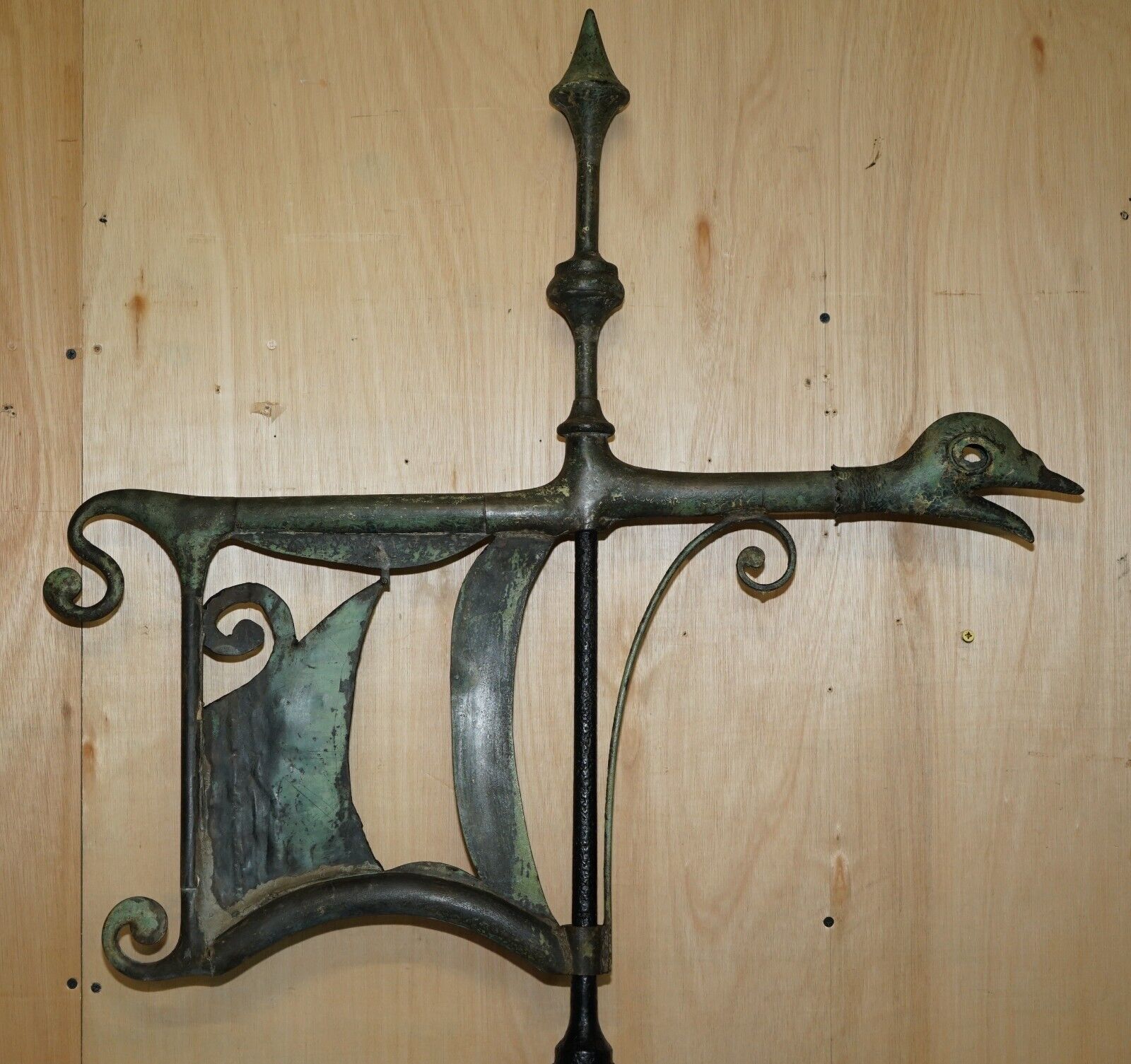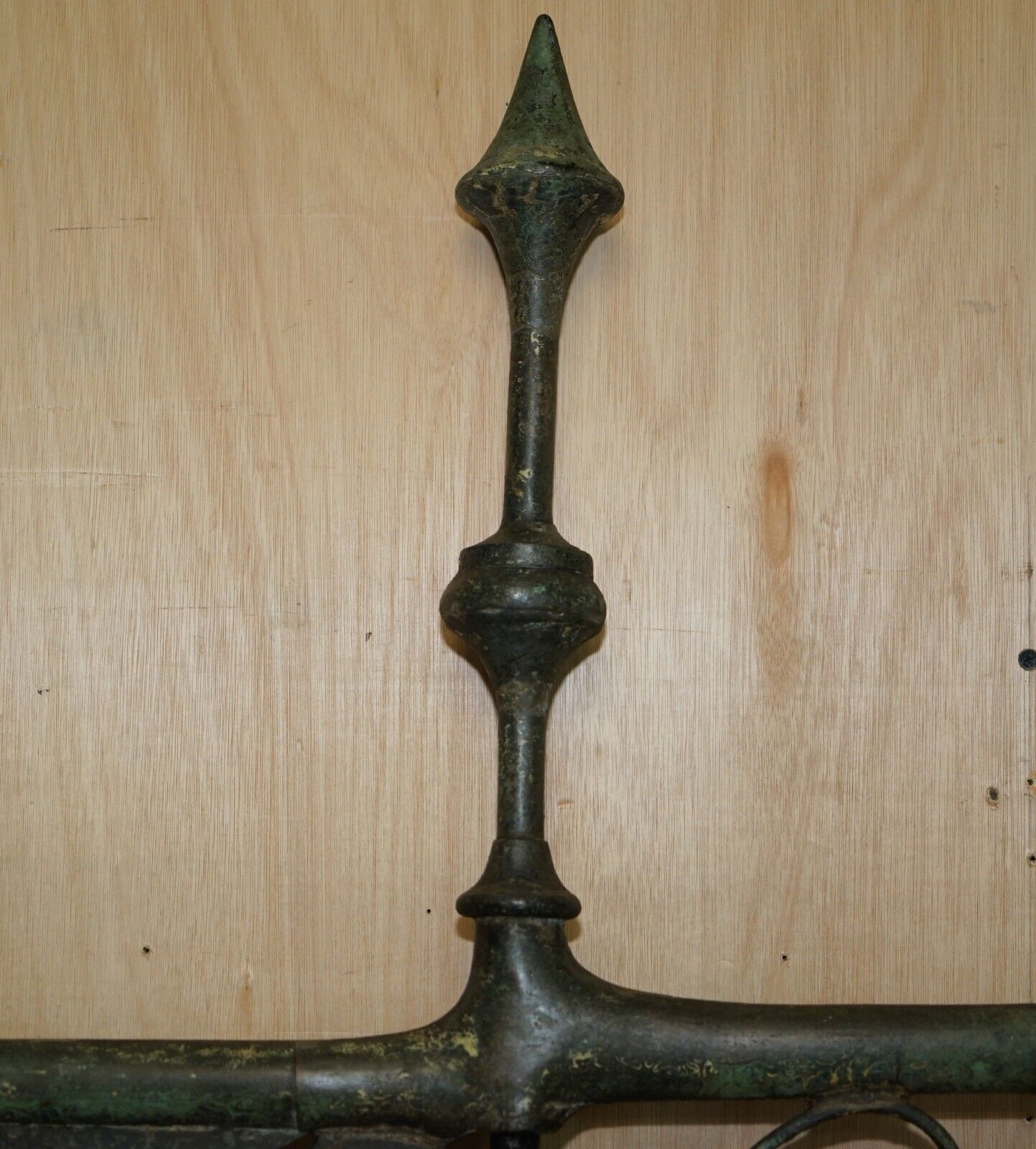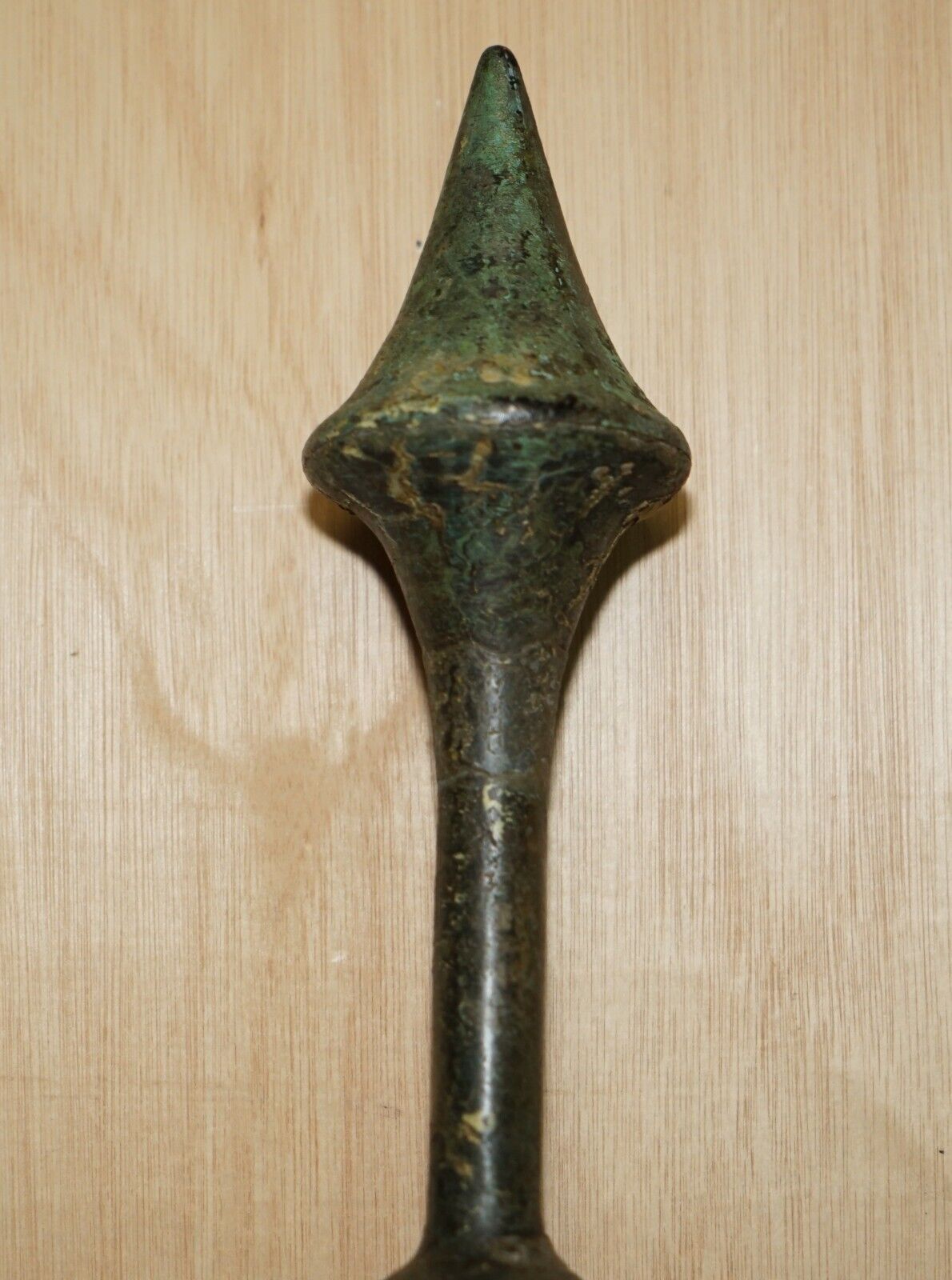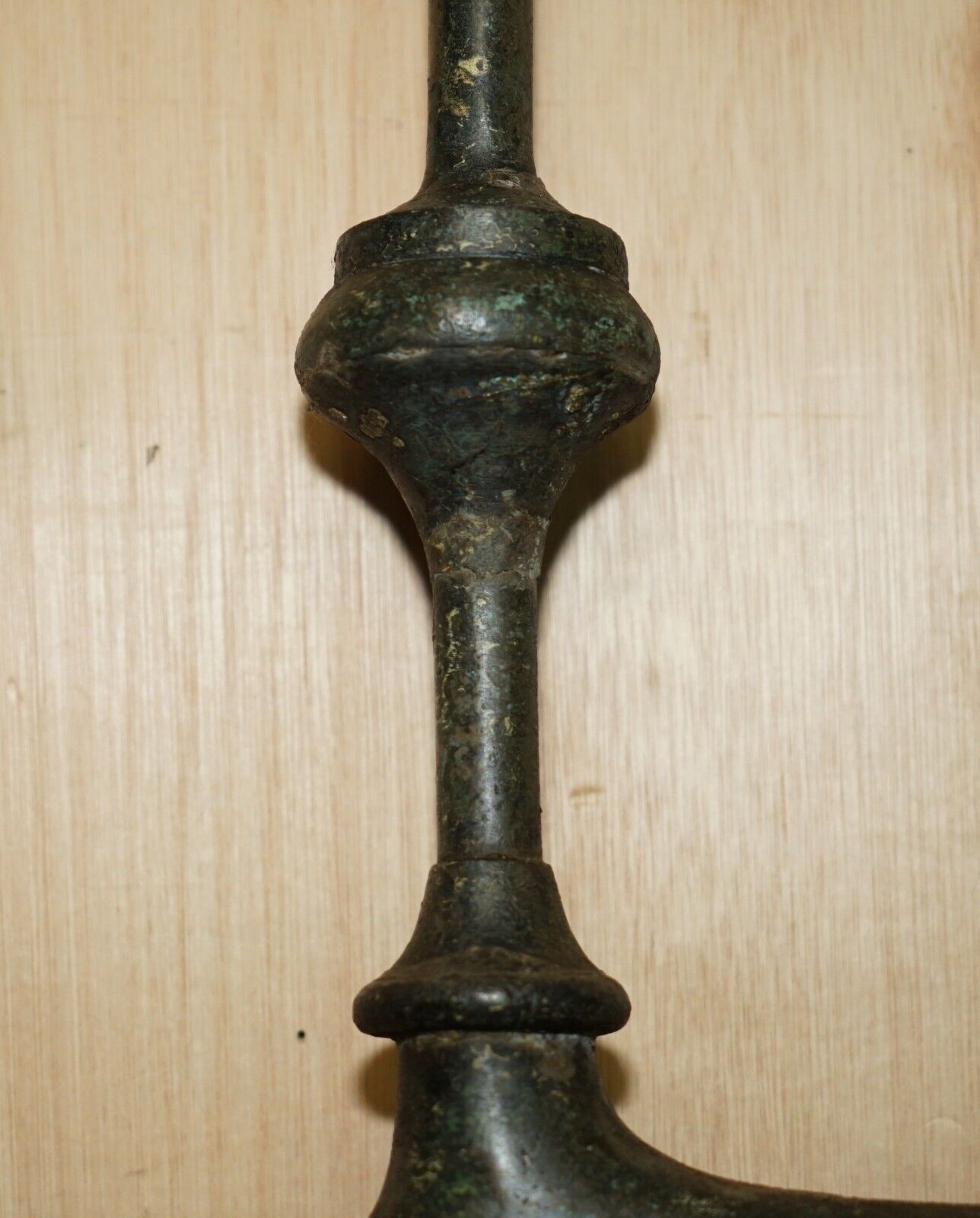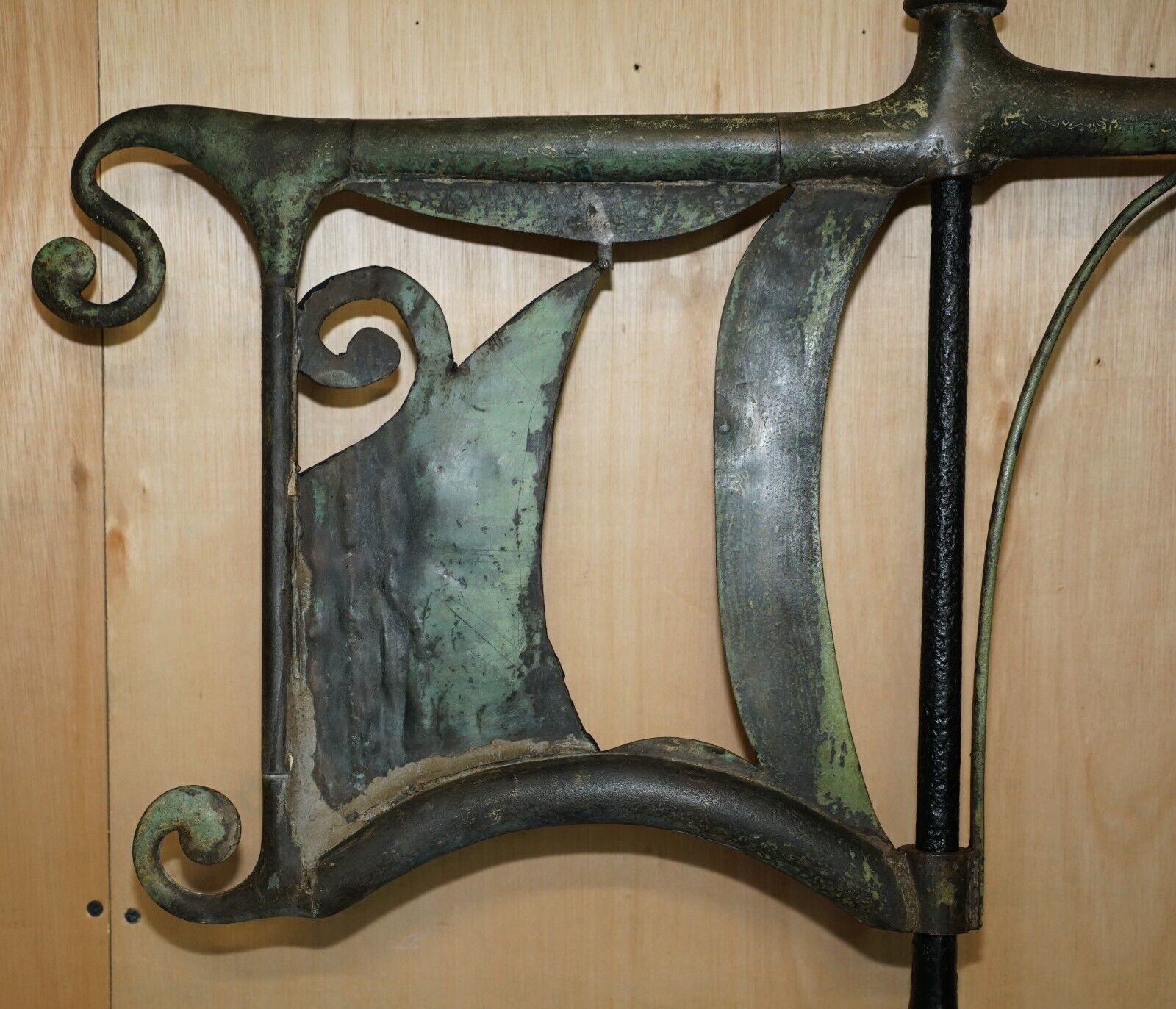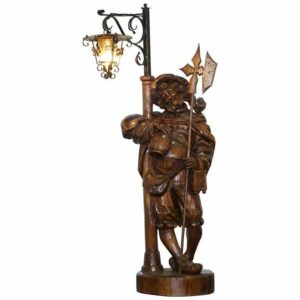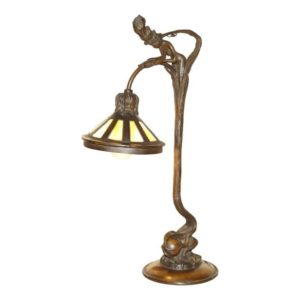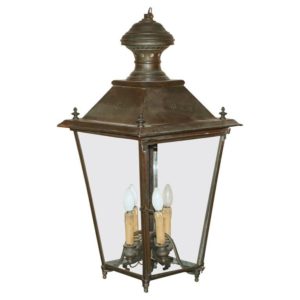Select Category
- All Tables
- Bedroom
- Bookcase
- Campaign Furniture
- Chesterfield Seating
- Cupboards
- Decorative Pieces
- Designer Brand Furniture
- Desks
- Dining Room
- Dining Tables
- Drawers
- Everything Else!
- Fine Furniture
- Fully Restored
- Gillows of Lancaster & London
- Howard & Son’s
- Jewellery & Watches
- Lighting
- Mirrors & Pictures
- Other
- Precious Metals
- Seating
- Sideboards
- Statues Sculptures & Art
LORD CHEIF JUSTICE GEORGE JEFFREYS 1645-1689 1ST BARON ATTRIBUTED WEATHER VANE
£3,950.00
Out of stock
Payment options accepted

Description
Royal House Antiques
Royal House Antiques is delighted to offer for sale this super rare and highly collectable 17th century weather vane which by repute came from Lord Chief Justice Jeffries house chimney, he was the 1st Baron 1645-1689
Please note the delivery fee listed is just a guide, it covers within the M25 only for the UK and local Europe only for international, if you would like an accurate quote please send me your postcode and I’ll provide you with the exact price
A very rare and wonderful find, I bought this from a charming chap who was selling his cottage that he had furnished to a standard you can’t imagine over 60+ years, the cottage dated back from memory over 800 years he had some of the most interesting and well curated pieces I have ever had the pleasure to handle, some of which never made it to sale and are still in my private collection
The condition is exquisite, the wrought iron base looks to be later, the top section slides down on to it perfectly, the condition is exactly as you would wish it to be
Dimensions
Height:- 226cm, the base height alone to the dome is 57cm
Width:- 83cm
Depth:- 22cm
Please note all measurements are taken at the widest point, if you would like any additional or specific measurements please ask
George Jeffreys, 1st Baron Jeffreys
George Jeffreys, 1st Baron Jeffreys PC (15 May 1645 – 18 April 1689), also known as “the Hanging Judge”,[1] was a Welsh judge. He became notable during the reign of King James II, rising to the position of Lord Chancellor (and serving as Lord High Steward in certain instances). His conduct as a judge was to enforce royal policy, resulting in a historical reputation for severity and bias.
Early years and education
Jeffreys was born at the family estate of Acton Hall, in Wrexham, in Wales, the sixth son of John and Margaret Jeffreys. His grandfather, John Jeffreys (died 1622), had been Chief Justice of the Anglesey circuit of the Great Sessions. His father, also John Jeffreys (1608–1691), was a Royalist during the English Civil War, but was reconciled to the Commonwealth and served as High Sheriff of Denbighshire in 1655.
His brothers were people of note. Thomas, later Sir Thomas (knighted in 1686), was the English Consul in Spain and a Knight of Alcántara. William was vicar of Holt, near Wrexham, from 1668 to 1675. His younger brother, James, made a good ecclesiastical career, becoming Vice-Dean of Canterbury in 1685.
George was educated at Shrewsbury School from 1652 to 1659, his grandfather’s old school, where he was periodically tested by Philip Henry, a friend of his mother. He attended St Paul’s School, London, from 1659 to 1661 and Westminster School, London, from 1661 to 1662. He became an undergraduate at Trinity College, Cambridge, in 1662, leaving after one year without graduating, and entering the Inner Temple for law in 1663
He embarked on a legal career in 1668, becoming a Common Serjeant of London in 1671. He was aiming for the post of Recorder of London, but was passed over for this in 1676 in favour of William Dolben. He turned instead to the Court and became Solicitor General to the Duke of York and of Albany (later King James II & VII), the younger brother of Charles II. Despite his Protestant upbringing, he found favour under the Roman Catholic Duke.
Jeffreys distinguished himself with black humour, for example noting that two brothers convicted of stealing lead from the roof of Stepney Church had “zeal for religion … so great as to carry you to the top of the church”, and noting that they had narrowly avoided committing a capital offence
Jeffreys was knighted in 1677, became Recorder of London in 1678 when Dolben resigned, and by 1680 had become Chief Justice of Chester and Counsel for the Crown at Ludlow and Justice of the Peace for Flintshire. During the Popish Plot he was frequently on the bench which condemned numerous innocent men on the perjured evidence of Titus Oates. These condemnations were remembered against him in 1685 when he secured the conviction of Oates for his perjury at the same trials. Charles II created him a baronet in 1681, and two years later, he was Chief Justice of the King’s Bench and a member of the Privy Council.
Jeffreys became Lord Chief Justice in 1683 and presided over the trial of Algernon Sidney, who had been implicated in the Rye House Plot. Sidney was convicted and executed: Jeffreys’s conduct of the trial caused some unease, in particular, his ruling that while two witnesses were normally required in a treason trial, and the Crown had only one, Sidney’s own writings on republicanism were a second “witness” on the ground that “to write is to act”. John Evelyn, meeting him at a wedding two days later, thought his riotous behaviour unbecoming to his office, especially so soon after Sidney’s trial. Jeffreys’s elevation was seen by many as a reward for the successful conviction of Lord Russell in connection with the same conspiracy as Sidney: Jeffreys, who had led for the prosecution at Russell’s trial, replaced Sir Francis Pemberton, who had presided at the same trial and made clear his doubts about Russell’s guilt, much to the King’s displeasure. Jeffreys conducted the prosecution with far more dignity and restraint than was usual with him, stressing to the jury that they must not convict unless they were certain of Russell’s guilt.
A less well-known act of Jeffreys occurred on assize in Bristol in 1685 when he made the mayor of the city, then sitting fully robed beside him on the bench, go into the dock, and fined him £1000 for being a ‘kidnapping knave’. Some Bristol traders were known at the time to kidnap their own countrymen and ship them away as slaves
James II, following his accession to the throne, named Jeffreys as Lord Chancellor in 1685, and elevated him to the peerage as Baron Jeffreys of Wem. In 1687 he was appointed Lord Lieutenant of Shropshire and of Buckinghamshire.[5] His first major trial in James’ reign was that of Titus Oates. While there is no doubt of Oates’ guilt, Jeffreys’s conduct was no more decorous than usual; the latter part of the trial has been described as such an exchange of insults between Jeffreys and Oates as to make it doubtful if proceedings could continue.[6] Unable to impose the death penalty, Jeffreys and his colleagues apparently tried to achieve the same result by sentencing Oates to a series of whippings so savage that he might well have died; although, as Kenyon remarks, it was arguably no more than he deserved.[7] Jeffreys was much criticised for his conduct of the trial of the aged and much-respected clergyman Richard Baxter, but these criticisms must be treated with caution since the actual records have disappeared and all the surviving accounts of the trial were written by partisans of Baxter.
Jeffreys’s historical notoriety comes from his actions in 1685, after Monmouth’s Rebellion. Jeffreys was sent to the West Country in the autumn of 1685 to conduct the trials of captured rebels. The centre of the trials was Taunton, Somerset. Estimates of the numbers executed for treason have been given as high as 700; however, a more likely figure is between 160 and 170 of 1,381 defendants found guilty of treason. Although Jeffreys has been traditionally accused of vindictiveness and harsh sentencing, none of the convictions has been considered improper, except for that of Alice Lisle tried at Winchester. Furthermore, as the law of the time required a sentence of death for treason, Jeffreys was required to impose it, leaving the king the option of commuting the sentence under the prerogative of mercy. Arguably, it was James II’s refusal to use the prerogative as much as was customary for the time rather than Jeffreys’s actions that made the government’s reprisals so savage.
Alice Lisle was accused of sheltering some members of the defeated rebel army who had not yet been found guilty of treason. There was no evidence that she had taken an active part in the rebellion itself, and she was not accused of this. When the jury asked whether her actions could in law be considered treasonable, Jeffreys replied affirmatively. The jury then returned a guilty verdict.[9] She was executed at Winchester by beheading (although the original sentence had been that she was to be burned at the stake). The King’s refusal to reprieve her gave rise to a belief that he was taking posthumous revenge on her husband, the regicide Sir John Lisle, who had been one of his own father’s judges at his trial in 1649. Lisle had been murdered by Royalist agents at Lausanne in 1664, but the King had a long memory and may well have felt that Alice should suffer judicial punishment in her husband’s place.
James considered making Jeffreys Viscount Wrexham and Earl of Flint. James refrained only because Jeffreys remained a Protestant.[10] Despite his loyalty to the king, Jeffreys never hid his contempt for Roman Catholicism: in the last months of James’ reign, as the Government drifted without leadership, Jeffreys remarked cynically that “the Virgin Mary is to do all”.
As Lord Chancellor, Jeffreys was given the presidency of the Ecclesiastical Commission, a body established by James II under the royal prerogative to control the governance of the Church of England and coerce it.[11] Despite his misgivings and concerns that James was being overly influenced by hardline Roman Catholics, the Ecclesiastical Commission took proceedings against various clergy including the Bishop of London and academics of Oxford and Cambridge universities considered by James II to be overly Protestant. The Ecclesiastical Commission’s activities came to an end with the Glorious Revolution.
Jeffreys, presumably after being granted the title 1st Baron of Wem, took the residence of Lowe Hall in Wem, Shropshire. The extant Wem Hall was built in 1666, although it has subsequently been significantly remodelled.[12] He also had Bulstrode Park built for him in 1686.
In 1667, he married Sarah Neesham or Needham, by whom he had seven children; she died in 1678. She was the daughter of the impoverished vicar of Stoke d’Abernon, Thomas Neesham. A story is published, that Jeffreys sought to marry a daughter of a rich City merchant and had a secret correspondence with her, through Sarah, her kinswoman and companion. When the merchant discovered the plot he refused his home to Sarah and George did a noble act by marrying her.[13] They married in the church of All Hallows-by-the-Tower in the City of London.
He married secondly, in 1679, Anne, daughter of Sir Thomas Bloodworth, who was Lord Mayor of London, 1665–66; she was the widow of Sir John Jones of Fonmon Castle, Glamorgan. Being only 29 at the time of her second marriage, she was described as a ‘brisk young widow’ and there were some rumours about her. She was said to have a formidable temper: Jeffreys’s family went in awe of her, and it was said she was the only person he was afraid of. A popular ballad joked that while St. George had killed a dragon and thus saved a maiden in distress, Sir George had missed the maiden and married the dragon by mistake.
During the Glorious Revolution, when James II fled the country, Jeffreys stayed in London until the last moment, being the only high legal authority in James’s abandoned kingdom to perform political duties. When William III’s troops approached London, Jeffreys tried to flee and follow the King abroad. He was captured in a public house in Wapping,[14] now named The Town of Ramsgate. Reputedly he was disguised as a sailor, and was recognised by a surviving judicial victim, who claimed he could never forget Jeffreys’s countenance, although his ferocious eyebrows had been shaven. Jeffreys was terrified of the public when dragged to the Lord Mayor and then to prison “for his own safety”. He begged his captors for protection from the mob, who intended “to show him that same mercy he had ever shown to others”.
He died of kidney disease (probably pyelonephritis) while in custody in the Tower of London on 18 April 1689. He was originally buried in the Chapel Royal of Saint Peter ad Vincula in the Tower. In 1692 his body was moved to St Mary Aldermanbury.
In his London Journal, Leigh Hunt gives the following account of Judge Jeffreys’s death and burial
Jeffreys was taken on the twelfth of September, 1688 [sic]. He was first interred privately in the Tower; but three years afterwards, when his memory was something blown over, his friends obtained permission, by a warrant of the queen’s[16] dated September 1692, to take his remains under their own care, and he was accordingly reinterred in a vault under the communion table of St Mary, Aldermanbury, 2nd Nov. 1694. In 1810, during certain repairs, the coffin was uncovered for a time, and the public had sight of the box containing the mortal remains of the feared and hated magistrate.
During the Blitz, St Mary Aldermanbury was gutted by a German air raid and Jeffreys’s tomb was destroyed. No traces of it remain today. The ruins of the church were transported to the United States in 1966 and rebuilt to its original form in Fulton, Missouri, as a memorial to Winston Churchill. The site is now a landscaped garden.
Any questions please feel free to ask before you bid
ABOUT US
Royal House Antiques is a privately owned family ran business founded in Wimbledon SW19 and now based in Pulborough RH20. We specialise in finding, restoring very fine luxury antique leather seating, along with every single other type of antique ranging from the 16th century to the 20th century. We also stock a number of designer brands such as Fritz Hansen, Ralph Lauren, Cavalli, Charles & Ray Eames, Vitra, David Linley, Rolex, Tiffany, Jager Le Coulter and so on
PAYMENTS
We accept payment via Bitcoin, Bitcoin cash, Ethereum, Bacs, Chaps, PayPal or Card, we would kindly ask that all items are paid for within 48 hours and collected within 7 working days, we can hold all paid items for 14 days free of charge, there after a £20 a week storage fee will apply. We have long term storage which is very economically priced, we are happy to hold stock for as long as needed providing it is arranged prior to the purchase
If sold items aren’t collected within three months and no arrangements have been made for long term storage you will forfeit the item and payment
CONDITION
Please view the very detailed pictures as they form part of the description pertaining to the condition. Please also ask any questions before you bid and not after, all of our items are sold as seen and as listed
Royal House Antiques cannot be held liable for any independent assumptions made regarding the items we sell, if you are unsure on any point, please feel free to ask for clarity
Please note vintage period and original items such as leather seating will always have natural patina in the form of creasing and wear, we recommend annual waxing to ensure no moisture is lost, also hand dyed leather is not recommended to sit in direct sunlight for prolonged periods of time as it will dry out and fade
DELIVERY OR COLLECTION
This item is available for collection from our Pulborough warehouses RH20-1DF by appointment only, alternatively we can have it delivered nationwide to include Scotland, Wales and Ireland for a fee
Please contact me via email, alternatively my contact information is under the business seller section of the listing, with your postcode for a delivery quotation, as mentioned above the fee listed covers with the M25 for the UK, for international deliveries the amount listed covers local Europe only so parts of Belgium and France
Please be sure to include which item you would like to buy as the price is determined on size and distance, if you would like more than one piece of furniture the courier offers a substantial discount on the second and third item, for international shipping please view the below information
COURIER, LARGE ITEMS ONLY THAT CAN’T BE POSTED
We can arrange delivery nationwide, mostly with our nominated couriers, for Europe we use one reasonably priced professional company that we trust, for the rest of the world we use international shippers that can send any size item crated via air freight within 7-14 days after crating or soft packed and container shipped via sea freight within 30-60 days. The time frames outlined are guides only, non-domestic shipping is almost entirely governed by the airlines, sea freight loading times and custom clearances
Whomever delivers will always require help on the larger items to unload, the price you will be quoted will always be based on this assumption, if this is not possible, please let us know as it will affect the price to send a two-person team
Delivery is to the ground floor only, again if you need help upstairs or in flats etc that’s absolutely not a problem, the couriers charge £10-£20 per flight per man per item, if you have a working elevator then naturally there’s no additional fee
All courier fees are paid by yourself directly to the courier company, the contract for delivery is between yourselves the client and whichever courier you chose from those available I’m happy to accommodate your own courier after a cleared payment has been received, they need to book in a collection time with at least 24 hours notice, all collections must be made within 14 working days of the close of the sale unless agreed by prior arrangement
IMPORT DUTY
Most countries charge some kind of import duty however almost all of our items won’t incur any charges as the items are exempt from tax due to the age and materials used
For European deliveries the price you will be quoted will include all clearance documentation and any customs charges so there won’t be any additional fees
For international deliveries such as the United States there can be some import duty to pay and or a clearance fee, I would estimate that 99% of all deliveries clear customs without being stopped for either
All duties are the responsibility of the purchaser who is the importer, they can’t be covered by the seller or shipping agent or factored in with additional retrospective discounts
RETURNS
Royal House Antiques offers a no quibble return policy if the item is not as described, if there are any issues with the piece you will be refunded in full once the item has been returned and inspected within 14 days, alternatively if there is a small issue, we can discuss finding a mutual resolution that makes all parties happy
We don’t offer a sale on approval service which means you can purchase the item, have it delivered and if you simply don’t like it, return it, this comes under change of mind or doesn’t fit. There is a lot of time, money and work involved in transporting goods around the world, the costs incurred can be vast so my advice would be if you are unsure on a piece please ask as many questions as you like to make sure you understand everything before you buy, if you are still unsure then please either arrange a viewing in person or if that’s not possible then don’t buy from an online retailer, perhaps look for a local gallery instead
Additional information
| Brand | |
|---|---|
| Pattern | |
| Type | |
| Size | |
| Area of Use | |
| Finish | |
| Subject |
Related products
About Us
Royal House Antiques is a privately-owned family ran company founded in Wimbledon in 2012 by husband and wife James and Iris Thorpe

Usefull information
Contact Us
- Tel: 07850890032
- Email: james-thorpe-2010@hotmail.co.uk
Copyright 2024 Wimbelon-Furniture

